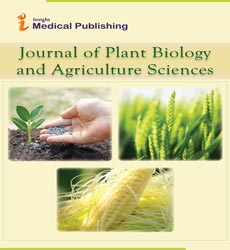Genome-wide structural and functional landscapes of SNPs revealed from the WGRS data of 179 accessions of Arachis-Plant Genomics Webinar
Abstract
Peanut being an important food, oilseed and fodder crop worldwide, its genetic improvement currently relies on genomics-assisted breeding (GAB). Since the level of marker polymorphism is limited in peanut, availability of a large number of DNA markers is the prerequisite for GAB. Therefore, we detected 4,309,724 single nucleotide polymorphisms (SNPs) from the whole genome re-sequencing (WGRS) data of 178 peanut accessions of Arachis along with the reference genome sequence of Tifrunner. SNPs were analyzed for the structural and functional features in order to conclude on their utility and employability in genetic and genomic studies. ISATGR278-18, a synthetic amphidiploid, showed the highest number of SNPs (2,505,266), while PI_628538 recorded the lowest number (19,058) of SNPs. A03 showed the highest number of SNPs, while the B08 recorded the lowest number of SNPs. The number of accessions required to record 50% of the total SNPs varied from 11 to 13 across the chromosomes. The rate of transitions was more than that of transversions. Among the various chromosomal contexts, intergenic and intronic regions carried more SNPs than the exonic regions. SNP impact analysis indicated 2,488 SNPs with high impact due to gain of stop codons, variations in splice acceptors and splice donors, and loss of start codons. Of the 4,309,723 SNPs, as high as 46,087 had the highest polymorphic information content (PIC) of 0.375. As an illustration of application, a drought and disease resistant accessions were compared with susceptible accessions to identify the SNPs with high impact substitutions. SNPs were also identified between the two sub-genomes (A and B). This SNP resource is being used for haplotype selection and allele mining for various genes and gene families. Overall, these structural and functional landscapes of the SNPs will be of immense importance for their utility in genetic and genomic studies including reverse genetics in peanut.
Open Access Journals
- Aquaculture & Veterinary Science
- Chemistry & Chemical Sciences
- Clinical Sciences
- Engineering
- General Science
- Genetics & Molecular Biology
- Health Care & Nursing
- Immunology & Microbiology
- Materials Science
- Mathematics & Physics
- Medical Sciences
- Neurology & Psychiatry
- Oncology & Cancer Science
- Pharmaceutical Sciences
